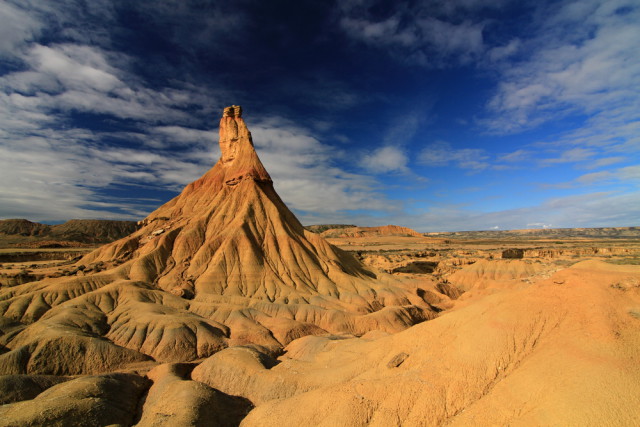 photo | Tramont_ana
photo | Tramont_ana
Even beyond the San Fermín festivities (particularly known for their running of the bulls) which kick off today, Navarre‘s capital Pamplona naturally gets most of the attention when it comes to this autonomous community of Spain. But the entirety of this compact region of northern Iberia (10,400 square kilometres/just over 4,000 sq. miles) shares a proud and ancient lineage, and its cities and towns offer visitors a wealth of art, architecture, history, and culture, along with some of the peninsula’s best ecotourism treasures, from the craggy Pyrenees in the north to the plains of the Ebro River in the south.
Culturally, Navarre is Basque (its name in Basque is Nafarroa, in Spanish Navarra), though it’s politically distinct from the Basque Country next door (and also, in many areas, where Castilian Spanish is more prevalent these days than the Basque language, Euskera). Here the Vasconi (the pre-Roman-Empire tribe that eventually became the Basques) resisted the Romans and the Visigoths/Franks who came after them, defeating the Franks in the famous Battle of Roncesvalles and giving rise to the Kingdom of Navarre, which even as it was later annexed by the kingdom of Spain retained a strong tradition of home rule that was preserved as it became a province of Spain, then since 1979 an autonomous community.
Here’s a quick overview of the lay of the land, which this blog be expanding on more in detail in future posts.
 photo | BoJe10
photo | BoJe10
The North/Pyrenees
The northern swath of the region, running up into the great Pyrenees range bordering France, is dotted with small towns with cobblestone streets and Romanesque churches, where the Basque language and traditions are still especially strong – as is a certain degree of mysticism – and rural tourism is particularly a gem. Here’s where, for example, you’ll find the ancient hórreos (raised stone and wood granaries) of the Aezkoa Valley; the mediaeval villages of Roncesvalles (Orreaga in Basque), Lekunberri, Donamaría, and Zugarramurdi (this last especially intriguing for its famous history of witchcraft); nature reserves such as Bertiz Natural Park and the Irati Forest; and towering peaks like Mesa de los Tres Reyes (more than 2.400 metres/7,950 feet) and Pico de Ory (2.100 m./6,900 ft.).
Central Navarre/Way of St. James
This is an area especially packed with history thanks to being traversed by the Camino de Santiago (Way of St. James), the legendary Catholic pilgrims’ route from Paris to Santiago de Compostela in Galicia. Major towns include Estella, Olite, Puente la Reina (top), and Viana, with a wealth of Romanesque and Gothic old quarters, bridges, palace, churches, and monasteries. The history goes back even farther here, with the ruins of ancient Roman Andelos at the town of Mendigorría and a Roman villa with remarkable mosaics at Arellano. Ecotourism is abundant here, as well, in areas such as the Parque Natural Urbasa y Andía. And by the way, foodies might be extra interested to explore areas of this region famous for black truffles, such as the town of Metauten.
The South/Tudela
Known as La Ribera, this flatter, heavily agricultural region is anchored by Navarre’s second largest city (pop. 40,000), on the Ebro River just an hour’s drive south of Pamplona. Tudela’s history is unusual for Navarre – founded by the Romans but conquered and ruled by the Muslim Moors of North Africa from 802 to till 1119, when the Christians reconquered the area. During those three centuries, a multi-cultural, multifaith society lived largely in peaceful coexistence, leaving a legacy that includes Islamic, Jewish, and Mudéjar (Islamic-influenced work of the Christian era) architecture in addition to Romanesque, Gothic, Baroque, and Neoclassical. Other towns worth visiting include Fitero (with Iberia’s oldest Cistercian monastery), Carcastillo, and Tulebras, while naturewise, the main attraction in this region is the nearly desertlike Bardenas Reales (above) with its dramatic formations.
All this of course is just scratching the surface! Learn more in depth at Turismo.Navarra.es.
Best fares to Pamplona from the U.K., from the USA.

